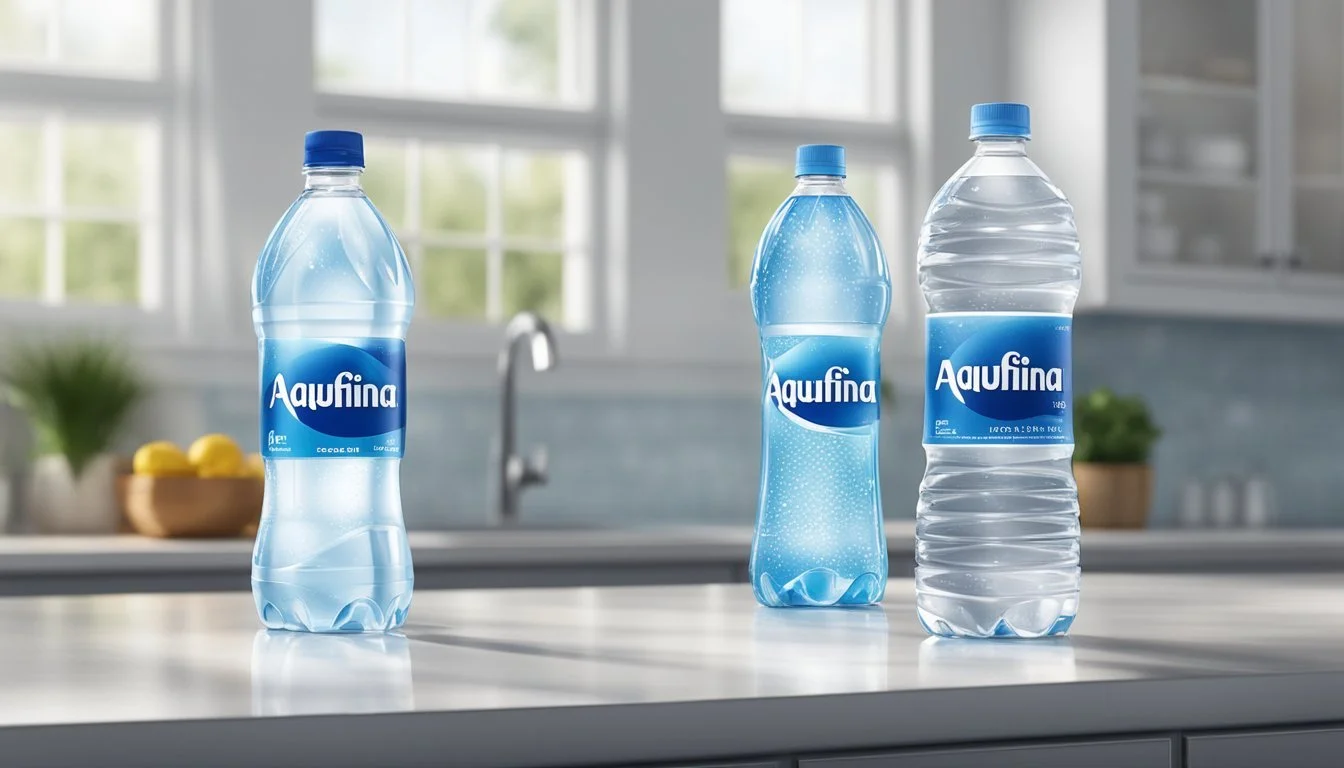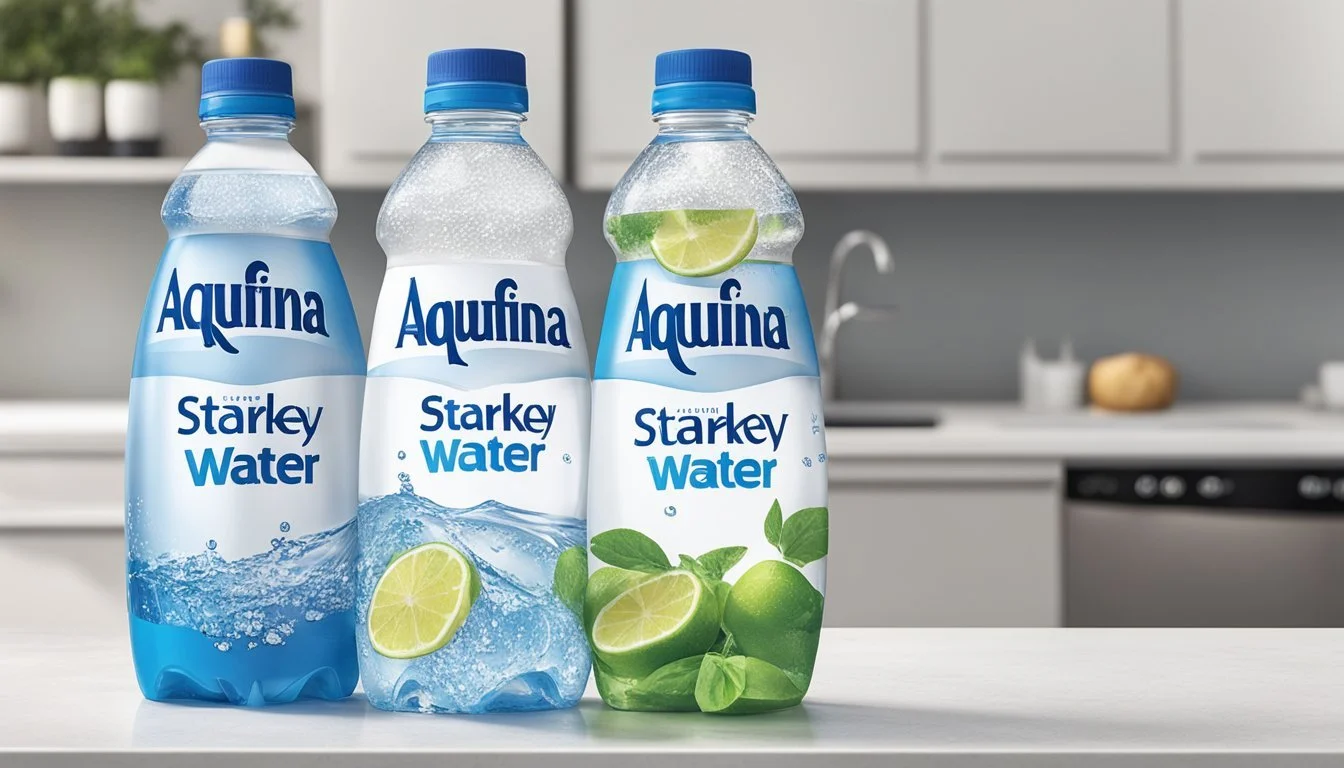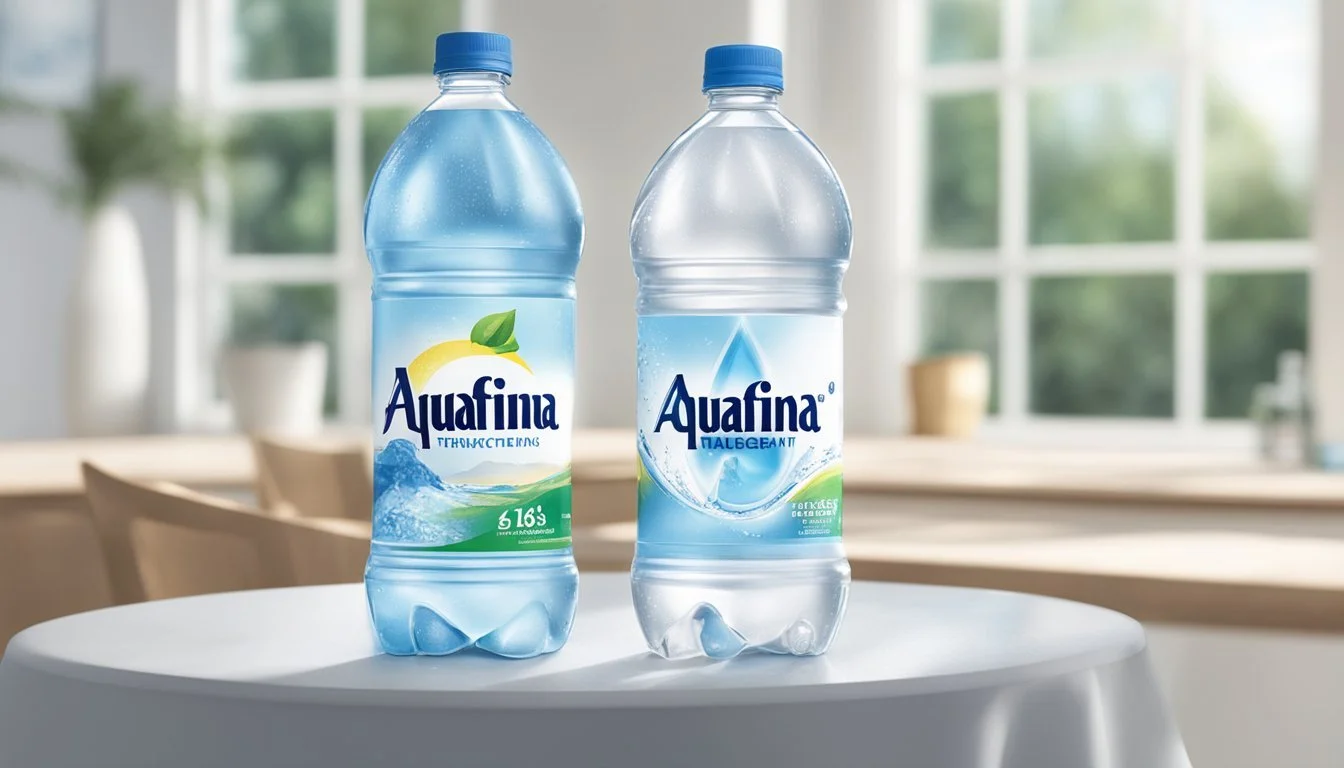Aquafina vs. Starkey
A Clear Comparison of Bottled Waters
When it comes to choosing the right bottled water, consumers often find themselves comparing Aquafina and Starkey. Both brands offer unique qualities, but there are distinct differences that might influence your choice. Aquafina, owned by PepsiCo, is known for its rigorous purification process that ensures clean and crisp-tasting water.
On the other hand, Starkey Water, sourced from a geothermal spring in Idaho, promises natural mineral content and a subtly refreshing flavor. This distinction appeals to those preferring naturally sourced water with potential health benefits from minerals.
Considering factors such as taste, source, and purification methods, one might lean towards a specific brand based on personal preferences. Read on to discover the characteristics that set these two brands apart and help you make the best choice for your hydration needs.
Overview of Bottled Water Industry
The bottled water industry is a significant sector within the global beverage market. It's driven by growing consumer demand for convenient and safe drinking water.
Bottled water is now available in various types, including still, sparkling, and flavored options. Popular bottled water brands include Aquafina, Starkey, Dasani, and Nestlé Pure Life.
The industry's value has increased substantially over the years. Robust sales data highlights this trend, with bottled water sales growth outpacing other beverages.
Consumers often choose bottled water for its perceived purity. Many bottled waters undergo multiple stages of filtration, ensuring the removal of impurities.
Different brands employ varied filtration methods. For example, Aquafina uses a proprietary HydRO-7 filtration process, while other brands like Dasani use reverse osmosis.
Environmental concerns are a significant aspect of the industry. The production and disposal of plastic bottles contribute to environmental challenges, prompting innovation in packaging solutions.
Economic impact is also notable. The bottled water industry creates thousands of jobs globally and supports numerous ancillary industries.
Despite its growth, the industry faces criticism for environmental impact and high costs compared to tap water. Leading brands often engage in sustainability efforts to address these issues.
Comparing Aquafina and Starkey
Aquafina and Starkey differ significantly in their brand histories, water sources, and purification processes. Both brands adhere to stringent quality standards but offer distinct characteristics that cater to different consumer preferences.
Brand History and Origin
Aquafina is a product of PepsiCo, launched in 1994. It quickly became one of the leading bottled water brands due to PepsiCo's vast distribution network and marketing prowess. Aquafina emphasizes its purified water, ensuring consistent quality across all its bottles.
Starkey, on the other hand, is owned by Whole Foods Market. It sources its water from a geothermal spring in Idaho. Unlike Aquafina, Starkey focuses on natural spring water, offering a premium product to consumers seeking a more natural option.
Water Source and Natural Environment
Aquafina sources its water from public supplies, which undergo rigorous purification processes. The brand does not highlight any specific natural environment or geographic origin, focusing instead on the purity and consistency of its water.
Starkey sources its water from an underground geothermal spring located in the Rocky Mountains of Idaho. The remote and pristine environment of the Rocky Mountains lends a unique mineral profile to Starkey’s water, differentiating it from other brands.
Purification Processes and Quality
Aquafina employs the HydRO-7 filtration process, ensuring that its water is thoroughly purified. This method eliminates various contaminants, resulting in water that meets EPA and FDA regulations for bottled water. The addition of electrolytes enhances the taste, making Aquafina a popular choice for those who prefer purified water.
Starkey, in contrast, undergoes minimal processing to preserve its natural mineral content. The spring water is filtered and treated to ensure safety but retains a natural taste with minerals and electrolytes. This approach appeals to consumers who prefer water that is closer to its natural state.
Both Aquafina and Starkey maintain high quality and safety standards, but their differing sources and processing methods cater to distinct consumer preferences.
Nutritional Comparison
Aquafina and Starkey offer distinct profiles when it comes to their mineral content and pH levels. This section examines each aspect critically to determine potential health benefits and concerns.
Mineral Content and Health Benefits
Aquafina undergoes extensive filtration, removing most dissolved minerals, resulting in a very low mineral content.
Starkey, sourced from geothermal springs in Idaho, retains natural minerals such as calcium and magnesium. Starkey's mineral content includes:
Calcium: Contributes to bone health.
Magnesium: Supports muscle and nerve function.
Potassium Chloride: Maintains electrolyte balance.
Due to its higher mineral content, Starkey may provide more health benefits, especially for those needing dietary supplements of these minerals.
pH Levels and Acidity
Aquafina typically has a neutral pH around 7. This neutrality is achieved through its rigorous purification process. Starkey's pH level ranges between 8 and 9, marking it as alkaline water.
Aquafina: Neutral pH might appeal to those preferring water that is neither acidic nor alkaline.
Starkey: Alkaline nature might help neutralize acidity in the body.
Higher pH in Starkey may offer benefits to individuals looking to balance body acidity. Aquafina's neutral pH ensures it is neither too acidic nor too basic for general consumption.
Taste Profile Analysis
Aquafina and Starkey offer unique taste experiences due to their distinct purification processes and mineral content. This section explores the sensory experience and how both brands compare with other bottled waters.
Sensory Experience and Flavor
Aquafina is known for its crisp and clean taste, achieved through a rigorous seven-step purification process. This meticulous approach removes impurities and results in a neutral flavor profile that appeals to those who prefer a straightforward, unadulterated water taste.
Starkey, on the other hand, is often described as having a full-bodied and almost savory flavor. This unique taste profile comes from its natural mineral content, contributing to a thicker mouthfeel. Some have found this distinctive flavor appealing, while others find it divisive, underscoring its position as a highly personal choice among water enthusiasts.
Comparison with Other Brands
Comparing Aquafina and Starkey with other popular brands, we see diverse taste profiles. Fiji and Evian are known for their soft, smooth taste due to natural mineral content. Dasani offers a similar experience to Aquafina, focusing on purity but includes added minerals for taste.
Voss and Smartwater both highlight their clean and crisp flavors, achieved through advanced filtration methods, similar to Aquafina. Starkey stands out for its full-bodied and distinctive flavor, which is unlike any other brand, making it a unique option for those interested in a more robust water taste.
Both Aquafina and Starkey thus provide distinct sensory experiences that cater to different preferences, making the choice between them largely dependent on individual taste buds.
Market Presence and Consumer Preference
Aquafina and Starkey have distinct market presences and attract loyal consumer bases through their unique qualities and distribution strategies.
Availability in Stores and Distribution
Aquafina, produced by Pepisco, enjoys widespread availability in grocery stores, convenience stores, and vending machines across the United States. It has a significant market share, enhanced by Pepisco's established distribution network. Consumers can easily find Aquafina in both urban and rural areas, making it a convenient choice for many.
Starkey Water, a subsidiary of Nestlé, focuses more on premium markets and health-conscious consumers. While it may not be as ubiquitous as Aquafina, Starkey is often found in specialty stores and health food markets. Nestlé leverages its distribution channels to strategically place Starkey in locations frequented by its target demographic, ensuring optimal visibility among those seeking higher-end bottled water options.
Brand Reputation and Loyalty
Aquafina has built a strong reputation based on its consistent quality and rigorous purification process. The brand has a loyal customer base that appreciates its trusted taste and accessibility. Aquafina’s marketing efforts, including sponsorships and partnerships, further solidify its presence in the market.
On the other hand, Starkey Water is recognized for its ancient artesian source and natural composition, attracting consumers who prioritize the origin and purity of their water. Starkey's brand loyalty stems from its commitment to natural and sustainable practices, appealing to health-conscious and eco-friendly consumers. This distinct market positioning helps Starkey maintain a dedicated following despite its smaller footprint compared to Aquafina.
Regulatory Standards and Safety
Aquafina and Starkey are regulated to ensure their bottled water is safe for consumption. Understanding these regulations and how each brand handles contaminants is essential for making an informed choice.
Compliance with Health Regulations
Both Aquafina and Starkey adhere to stringent health regulations enforced by the FDA and EPA. These regulations set limits on the presence of contaminants to ensure safe drinking water.
Aquafina, produced by PepsiCo, uses a HydRO-7 filtration process for purification. This process targets a wide array of impurities, including particulates and chemicals. The water undergoes rigorous testing to remain compliant with health standards.
Starkey, marketed by Whole Foods, claims its water is sourced from deep aquifers. The brand focuses on maintaining natural purity while adhering to regulatory requirements. Regular monitoring and testing help ensure safety and compliance with environmental health standards.
Contaminants and Water Purification
Contaminants such as bacteria, heavy metals, and chemicals are concerns in bottled water. Aquafina uses reverse osmosis, carbon filtration, and ozonation to remove these impurities. This multi-step process helps in delivering a consistent and clean product free from a noticeable range of contaminants.
Starkey follows a different purification method. Its water is mainly processed through natural filtration and minimal treatment. Although it focuses on maintaining mineral content, frequent testing ensures the water remains within safe levels for contaminants.
The importance of these purification techniques highlights each brand's commitment to consumer safety through effective contamination reduction methods.
Conclusion
When comparing Aquafina and Starkey, several factors come into play: taste, source, purity, and price.
Aquafina is known for its affordability and wide availability. It undergoes a rigorous purification process, ensuring it meets high standards of purity. This makes it a popular choice for those seeking reliable and consistent bottled water.
Starkey, sourced from geothermal springs, offers a unique taste profile and mineral content. This natural sourcing appeals to those who prefer a more distinctive and potentially beneficial water.
Feature Aquafina Starkey Taste Clean, neutral Distinct, mineral-rich Source Municipal water Geothermal springs Purity Highly purified Naturally filtered Price Affordable Premium
Each brand caters to different preferences. Aquafina is ideal for those prioritizing purity and affordability. Starkey suits those desiring natural spring water with a distinctive taste.
Choosing the best bottled water depends on individual needs. Whether one values cost-efficiency or natural sourcing, both brands have unique attributes.






